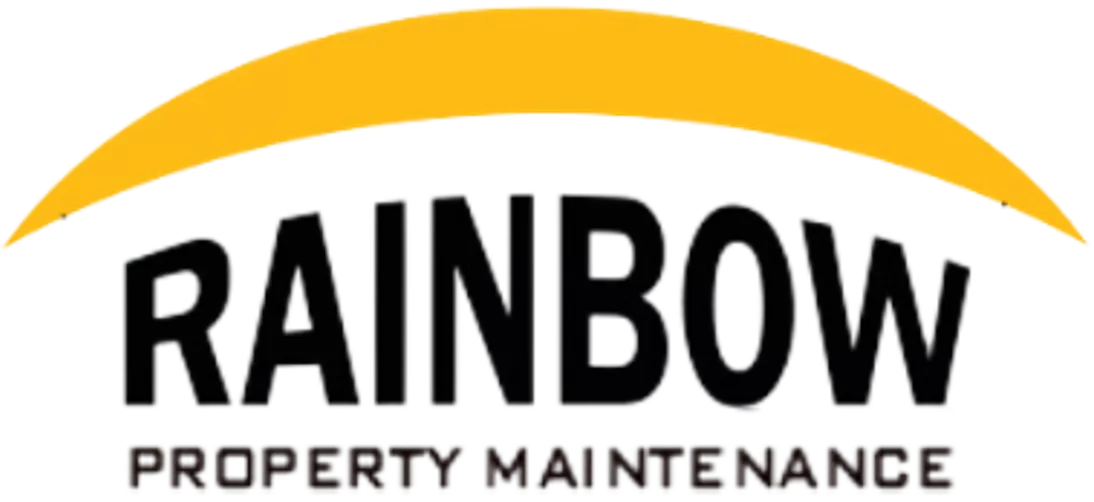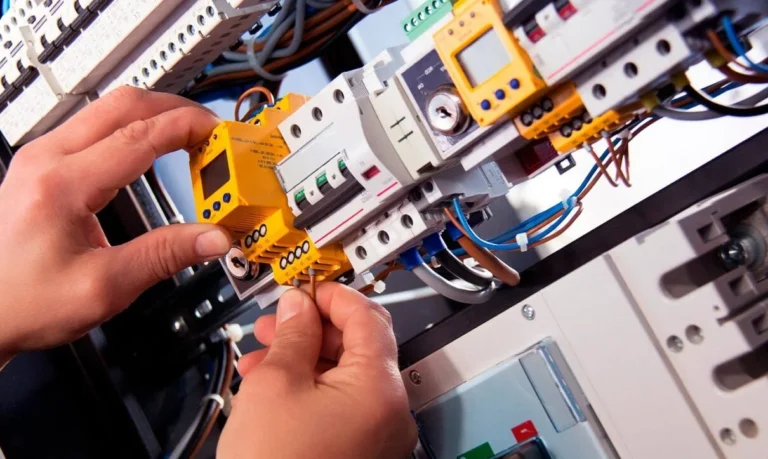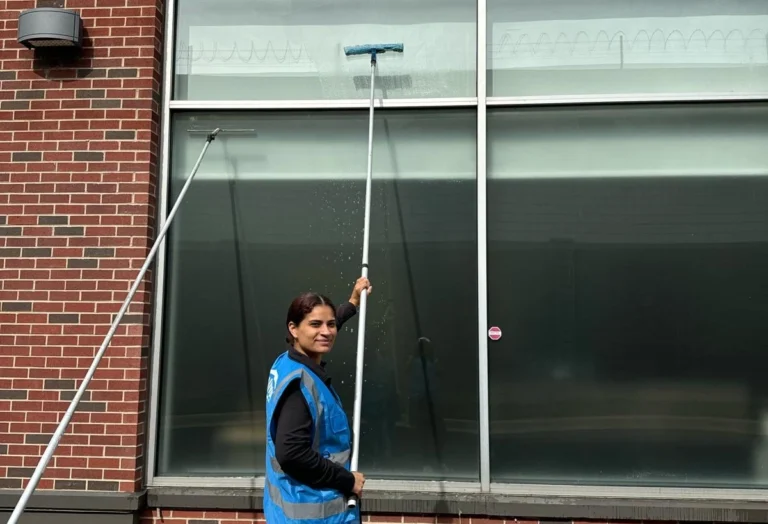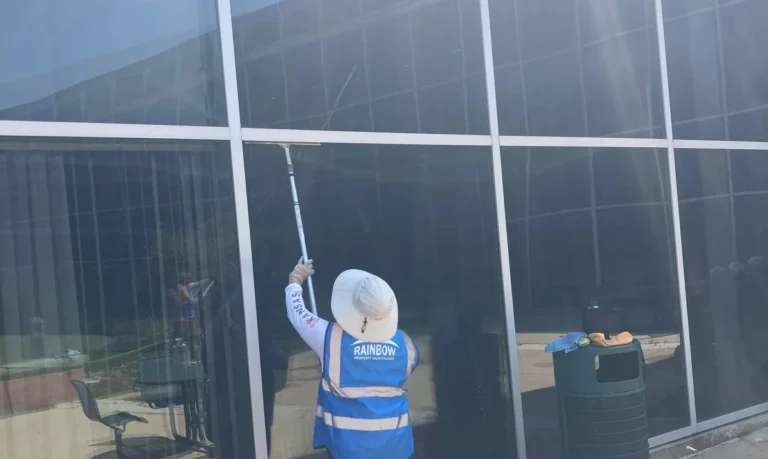How Regular Maintenance Can Save Your Commercial Facility Thousands
In the bustling world of business, the longevity and efficiency of your commercial facility hinge on regular and proactive maintenance. But did you know that this diligence can also translate into substantial financial savings? This article explores the multifaceted benefits of regular maintenance for commercial facilities, underlining how such practices not only extend the lifespan of a property but also offer significant cost savings.
Key Takeaways:
- Preventative maintenance reduces costly downtime and extends the lifespan of commercial equipment.
- Regular upkeep minimizes the need for expensive emergency repairs, saving thousands in potential costs.
- Proactive maintenance strategies can enhance the efficiency of facilities, leading to lower energy bills.
- Maintaining a commercial facility in top condition preserves its value and attractiveness to tenants or clients.
- Cost-effective maintenance management is crucial for budget optimization in any business operation.
Understanding the Impact of Preventative Maintenance
Scheduled maintenance operations act as the backbone of any savvy commercial facility’s strategy, aiming to halt larger issues in their tracks before they balloon into costly repairs. It’s an open secret in the business community that regular upkeep is synonymous with savings, yet the magnitude of its impact is often underestimated.
Exploring How Scheduled Maintenance Operations Prevent Larger Issues
Routine checks and maintenance are more than just ticking boxes on a to-do list; they are proactive steps towards safeguarding the gears that keep a facility running smoothly. Without these periodic interventions, minor issues can rapidly evolve into major problems, disrupting operations and leading to downtime that no business can afford.
The Role of Preventative Maintenance in Extending Equipment Life
Every piece of machinery has a lifecycle, but regular care and maintenance stretch this lifespan, ensuring that commercial facilities get the most out of their investments. Consider this: the cost of periodically replacing a filter or tightening a bolt is insignificant compared to the expense of purchasing new equipment years before you should need to.
Real-world Examples of Cost Savings Achieved Through Proactive Measures
Across the board, businesses that adhere to a strict maintenance schedule report not only lower repair costs but also reduced energy bills and optimized operational efficiency. For instance, a study conducted on manufacturing facilities showed that those implementing preventive maintenance strategies saw a reduction in unplanned downtime by up to 35%, directly translating into savings in the thousands, if not millions, of dollars. By investing a fraction of potential emergency repair costs into regular maintenance, businesses can significantly lower their operating expenses. The savings realized go beyond just the immediate reduction in repair bills; they also include longer equipment lifespans, reduced energy consumption, and maintained property value—proving that a stitch in time does indeed save nine. Boldly put, embracing regular maintenance isn’t just a cost-saving strategy; it’s a cornerstone of wise management. To further grasp the breadth of savings your commercial facility could be enjoying, discover our maintenance programs saving thousands.
The Cost of Neglect: Analyzing Emergency Repair Expenses
Ignoring regular maintenance can quickly escalate into emergency repair situations for commercial facilities, leading to unwelcome financial burdens. Studies show that proactive care significantly reduces the likelihood of sudden malfunctions that demand immediate, costly attention.
Case Studies on How Neglecting Maintenance Can Lead to Significant Repair Bills
A glimpse into various industries reveals that the failure to maintain essential systems can result in repair or replacement costs that far exceed those of regular maintenance. For instance, HVAC systems in commercial buildings, when left unchecked, have been known to fail during peak usage, necessitating expensive, emergency interventions. This contrast starkly with the manageable expenses involved in routine inspections and maintenance.
Comparing the Costs: Preventative vs. Emergency Maintenance
Consider the financial impact of preventative care versus responding to an emergency. The former is an investment in long-term functionality and cost management, while the latter is often a hefty, unplanned expenditure that can drastically affect a facility’s budget. In essence, investing in preemptive maintenance can save a commercial entity thousands, showcasing its role as a pivotal cost-saving measure.
The Importance of Regular Checks to Detect Signs of Potential Failure
Regular diagnostic checks are fundamental in identifying wear and tear that could potentially lead to system failures. Such assessments allow for minor repairs or adjustments to be made in a timely manner, averting the steep costs and operational disruptions associated with emergency repairs. The value of these routine checks cannot be overstated, as they play a critical role in maintaining the operational integrity and financial stability of a commercial facility. In a nutshell, prioritizing scheduled maintenance over reactive repairs not only conserves financial resources but also ensures the prolonged efficiency and reliability of commercial facilities. For businesses looking to optimize their maintenance strategy and mitigate the risks of costly repairs, exploring our specialized cleaning programs for commercial properties might provide a valuable foundation for regular maintenance efforts.
Enhancing Efficiency Through Regular Upkeep
Regular maintenance is not just a necessity; it’s a strategic approach to ensuring a commercial facility operates at peak efficiency, resulting in notable energy savings. A well-maintained facility doesn’t just look good; it operates better, consumes less energy, and offers a comfortable environment for everyone inside.
How Maintenance Contributes to Energy Efficiency and Savings
The correlation between maintenance and energy efficiency is clear. Systems that are regularly serviced, such as HVAC units or lighting systems, tend to use energy more efficiently. For instance, an HVAC system free of dust and debris doesn’t have to work as hard to maintain comfortable temperatures, thus consuming less energy. It’s a simple equation: better maintenance equals better efficiency, which in turn equals savings.
Case Studies on Facilities That Lowered Their Energy Bills with Regular Maintenance
Real-world examples abound of facilities that have reaped the benefits of diligent maintenance. One notable instance involved a commercial building that implemented a strict maintenance schedule for its HVAC and lighting systems, resulting in a 30% reduction in energy costs over two years. These valuable savings reflect the potential locked within regular maintenance practices.
Tips for Implementing Efficient Maintenance Schedules
To maximize efficiency and savings, it’s crucial to develop and adhere to a maintenance schedule tailored to your facility’s specific needs. Here are a few pointers:
- Regularly inspect all systems and equipment for signs of wear and tear.
- Prioritize preventative maintenance to avoid the breakdown of critical systems.
- Train maintenance staff or hire professionals to ensure all upkeep meets high standards.
Investing time and resources into regular upkeep not only ensures the longevity of a facility’s assets but also proves to be a wise financial decision by significantly reducing operational costs. By embracing a proactive attitude towards maintenance, commercial entities can enjoy substantial efficiency savings, validating the mantra that an ounce of prevention is worth a pound of cure. For those looking to delve deeper into optimizing their maintenance strategy and uncover additional savings, our specialized cleaning programs for commercial properties offer an excellent starting point. Explore our specialized cleaning programs to discover how they contribute to regular maintenance and overall facility efficiency.
Budgeting for Maintenance: Strategies for Cost-Effective Management
In the competitive landscape of commercial facility management, strategic budgeting for maintenance is not just beneficial—it’s paramount for operational success. Smart budgeting practices ensure resources are allocated efficiently, guaranteeing the long-term health and efficiency of a facility without overwhelming its financial resources.
Effective Budgeting Techniques for Maintenance Operations
A balanced approach towards budgeting for maintenance involves assessing and prioritizing needs based on the potential impact on operations and costs. Establishing a preventive maintenance schedule rather than reactive fixes not only extends the lifespan of essential equipment but also significantly cuts down emergency repair expenses. By earmarking funds for regular upkeep, facilities can avoid the high costs associated with system failures and downtime.
The Role of Maintenance Software in Reducing Costs and Improving Efficiency
Leveraging technology, specifically maintenance management software, can be a game-changer in streamlining operations and reigning in costs. These platforms allow for better tracking of maintenance requests, scheduling of routine checks, and allocation of resources, ensuring maintenance teams are working on what’s most critical. Moreover, they offer valuable insights into recurring issues, enabling managers to plan budgets more accurately and advocate for investments in areas yielding the highest return on efficiency and savings.
How to Allocate Resources Wisely for Both Short-term and Long-term Maintenance Needs
Effective resource allocation entails a clear understanding of immediate and future maintenance requirements. This requires a detailed audit of all facility assets, an assessment of their condition, and a forecast of their lifecycle. Investing in areas with the highest usage and wear can prevent expensive overhauls in the future. Additionally, setting aside a contingency fund for unexpected repairs can provide a safety net that prevents budget overruns. In conclusion, adopting a strategic approach to maintenance budgeting is essential for maintaining commercial facilities efficiently and cost-effectively. It involves prioritizing preventative measures, utilizing maintenance software for better management, and wisely allocating resources to balance short-term needs with long-term goals. For businesses aiming to refine their maintenance strategies further, exploring our specialized cleaning programs for commercial properties provides insight into additional practices that contribute to regular maintenance and operational cost reduction.
The Value of Aesthetic Appeal: Maintenance Beyond Repairs
In the competitive realm of commercial properties, maintaining a visually appealing and well-kept facility isn’t just about vanity—it’s a savvy business strategy. Regular cleaning and aesthetic maintenance play critical roles not only in upkeep but also in the economic vitality of a facility.
The Importance of Regular Cleaning and Aesthetic Maintenance
Cleanliness and aesthetic maintenance are at the core of creating a positive first impression. A well-maintained property speaks volumes about the professionalism and values of a business, reflecting directly on customer perception and employee satisfaction. It’s about transcending mere functionality to imbue spaces with an inviting atmosphere that resonates with clients and tenants alike.
How Keeping a Facility Visually Appealing Can Attract and Retain Clients or Tenants
Commercial properties thrumming with vibrancy and care attract businesses and tenants at a higher rate than those that neglect these aspects. The rationale is straightforward: environments that are not only operational but also pleasing to the eye inspire confidence and comfort, making them places where people want to conduct business, work, and visit regularly.
Strategies for Integrating Aesthetic Maintenance into Regular Upkeep Routines
Incorporating aesthetic maintenance into regular maintenance schedules is a proactive step towards asset protection and value enhancement. This can include periodical power washing of exterior surfaces, regular painting and touch-ups, landscaping, and timely cleaning of communal spaces. Employing a checklist for aesthetic upkeep alongside functional maintenance ensures no aspect is overlooked, leading to a comprehensive strategy that covers all facets of property care. In essence, prioritizing aesthetics alongside repairs in maintenance routines bolsters not only the physical state of a commercial property but also its appeal and market position. By investing in regular aesthetic maintenance, facilities can boost their competitive edge, attracting and retaining clients and tenants through a commitment to excellence in all facets of upkeep. For an in-depth exploration of how specialized cleaning and maintenance services can elevate your property, explore our specialized cleaning programs tailored for commercial facilities, enhancing both their function and form.
Navigating Maintenance Challenges in Commercial Buildings
Maintaining a commercial building involves juggling various tasks to ensure everything runs smoothly and efficiently. However, facilities managers often face challenges that can disrupt regular maintenance routines. Addressing these obstacles head-on is key to preventing costly downtimes and ensuring the longevity of the building’s infrastructure.
Overcoming Common Obstacles to Regular Maintenance in Large Facilities
Large facilities present unique challenges due to their size and the complexity of their systems. One primary hurdle is coordinating maintenance activities around the building’s operational schedule to minimize disruption. Another is the sheer scope of work required, which can stretch maintenance teams thin if not managed correctly. Implementing a structured plan that prioritizes tasks based on their urgency and impact is essential for overcoming these obstacles.
Case Study: How a Comprehensive Maintenance Plan Saved a Commercial Building from Potential Disasters
A notable example of effective maintenance management is a commercial building in Chicago that developed a comprehensive maintenance strategy. This plan included regular inspections, timely repairs, and a proactive approach to potential issues. As a result, the building avoided significant damages during a harsh winter storm that wreaked havoc on less prepared properties. This case underscores the value of anticipation and preparation in maintenance management.
Best Practices for Maintenance Staff Training and Coordination
Equipping maintenance staff with the necessary skills and knowledge is crucial. Continuous training programs ensure that the team is up-to-date with the latest maintenance techniques and safety protocols. Similarly, effective coordination among staff—enabled by regular communication and the use of maintenance management software—can significantly enhance the team’s efficiency and effectiveness. Together, these practices help maintain the building’s operational integrity and can lead to substantial commercial savings. In summary, navigating the maintenance challenges of commercial buildings requires a combination of strategic planning, skilled staff, and effective coordination. By addressing common maintenance obstacles proactively, facilities can avoid potential disasters, ensuring the building remains a safe and attractive place for occupants and visitors. For those looking to deepen their understanding of maintaining commercial facilities and reducing operational costs, exploring our specialized cleaning programs for commercial properties can provide valuable insights into further enhancing maintenance strategies.
Conclusions
In the bustling ecosystem of business operations, How Regular Maintenance Can Save Your Commercial Facility Thousands stands as a testament to the undeniable value of regular and proactive maintenance strategies. Through explorative insights and real-world examples, we’ve underscored the multifaceted benefits that preventative maintenance holds for commercial facilities. It’s evident that such diligence does not merely avert potential breakdowns but serves as a strategic investment—fortifying efficiency, preserving asset value, and ensuring operational continuity. Preventative maintenance staunchly reduces costly downtime and extends the lifespan of commercial equipment, a fundamental aspect of mitigating unplanned expenditure and bolstering facility reliability. Moreover, regular upkeep and aesthetic maintenance not only enhance a facility’s operational viability but also its market appeal—positively influencing client retention and attraction. Implementing effective budgeting strategies and leveraging modern maintenance software can drastically minimize costs while improving operational efficiency. As detailed in our sections, maintaining a balance between short-term repairs and long-term investment in upkeep can lead to significant financial savings. Embracing preventative maintenance is not just about cost reduction—it’s about investing in the facility’s future. It transforms maintenance from a perceived expense into a discernible value proposition, highlighting proactive care’s role in safeguarding against the accumulative costs of neglect.We encourage facility managers and business owners not to wait for the inconvenience of a breakdown to appreciate the value of regular maintenance. Start your investment in facility upkeep today; explore our comprehensive maintenance programs designed to save your facility thousands in the long run and discover our full range of commercial facility services tailored to maintain your property at its peak. For those keen to delve deeper into specialized solutions, our specialized cleaning programs provide an excellent start towards enhancing your maintenance strategy whilst reducing operational costs. A little regular care indeed goes a long way—embrace it today and watch as your facility thrives, reaping the benefits of enhanced efficiency, operational savings, and an unwavering commitment to excellence.
Frequently Asked Questions (FAQ):
How often should commercial facilities undergo maintenance checks?
The frequency of maintenance checks depends on the specific equipment and the facility’s usage but adhering to the manufacturer’s recommendations and regulatory standards is crucial.
Can regular maintenance impact a facility’s energy consumption?
Absolutely. A well-maintained facility operates more efficiently, often resulting in lower energy consumption and reduced utility bills.
Is it cost-effective to outsource commercial facility maintenance?
Outsourcing can be cost-effective, especially for specialized tasks or when it helps avoid the expense of maintaining an in-house maintenance team.
What are some common signs that a commercial facility needs maintenance?
Signs include unusual noises, reduced performance of HVAC systems, and visible wear and tear on equipment and building infrastructure.
Does regular maintenance help with regulatory compliance?
Yes, regular maintenance ensures that facilities remain compliant with health, safety, and industry-specific regulations, reducing the risk of fines and legal issues.
How can facility managers effectively track and manage maintenance tasks?
Utilizing maintenance management software can help track, prioritize, and schedule maintenance tasks, ensuring nothing is overlooked and resources are allocated efficiently.








